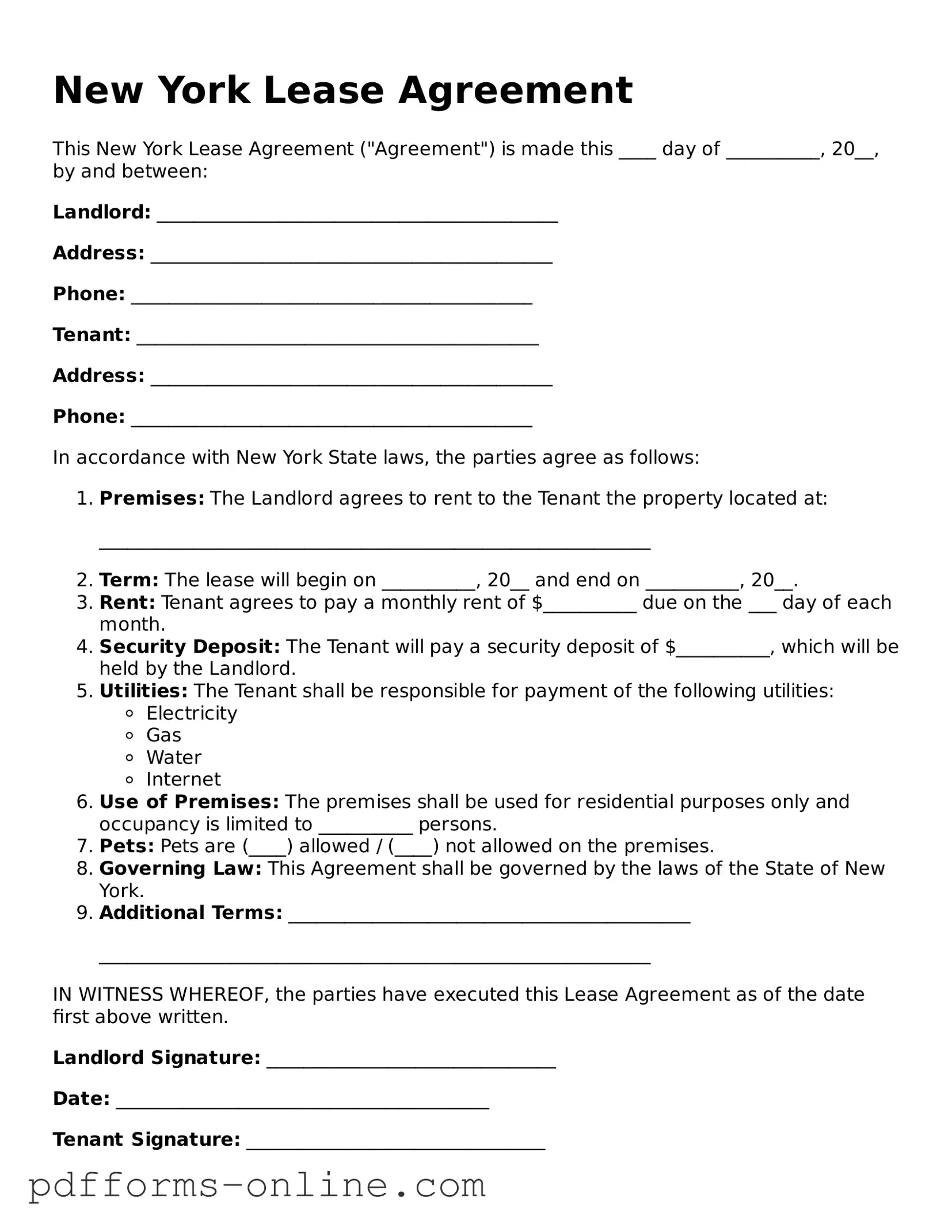New York Lease Agreement
This New York Lease Agreement ("Agreement") is made this ____ day of __________, 20__, by and between:
Landlord: ___________________________________________
Address: ___________________________________________
Phone: ___________________________________________
Tenant: ___________________________________________
Address: ___________________________________________
Phone: ___________________________________________
In accordance with New York State laws, the parties agree as follows:
- Premises: The Landlord agrees to rent to the Tenant the property located at:
___________________________________________________________
- Term: The lease will begin on __________, 20__ and end on __________, 20__.
- Rent: Tenant agrees to pay a monthly rent of $__________ due on the ___ day of each month.
- Security Deposit: The Tenant will pay a security deposit of $__________, which will be held by the Landlord.
- Utilities: The Tenant shall be responsible for payment of the following utilities:
- Electricity
- Gas
- Water
- Internet
- Use of Premises: The premises shall be used for residential purposes only and occupancy is limited to __________ persons.
- Pets: Pets are (____) allowed / (____) not allowed on the premises.
- Governing Law: This Agreement shall be governed by the laws of the State of New York.
- Additional Terms: ___________________________________________
___________________________________________________________
IN WITNESS WHEREOF, the parties have executed this Lease Agreement as of the date first above written.
Landlord Signature: _______________________________
Date: ________________________________________
Tenant Signature: ________________________________
Date: ________________________________________
